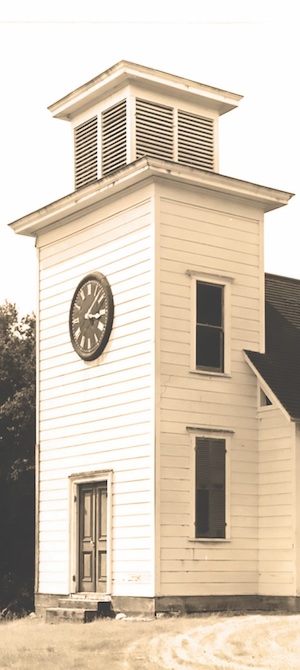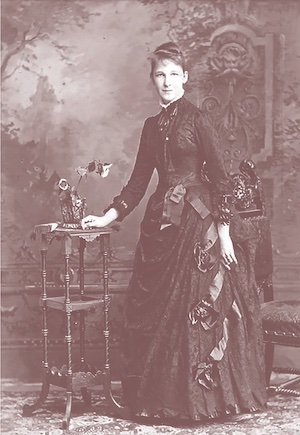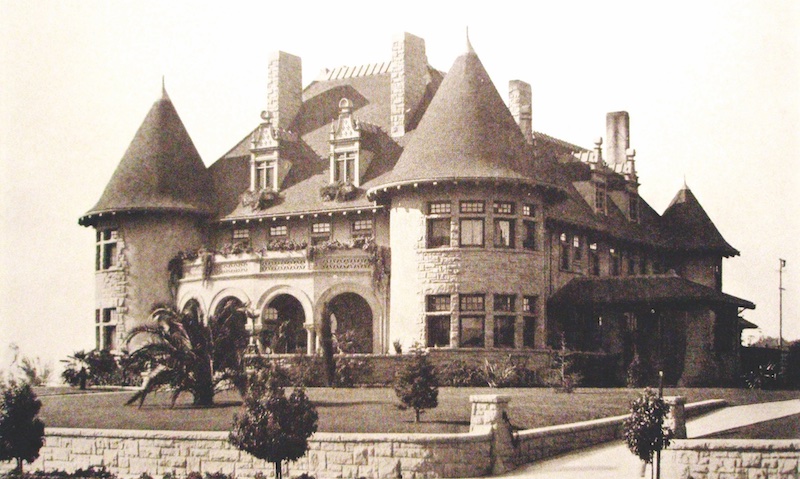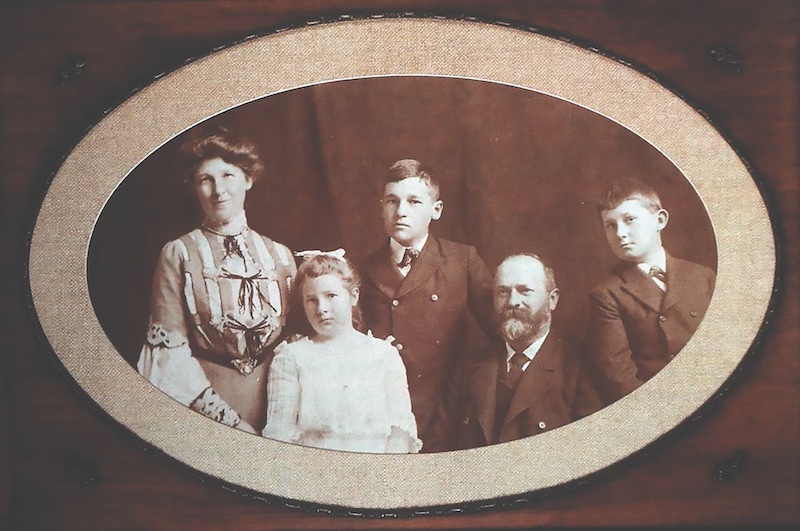Isn’t there a love story behind every beautiful tile? Malibu Potteries is no exception!

Born into a wealthy family in Cambridge, Mass., in 1857, Frederick Hastings Rindge was the only child of six to survive into adulthood, but not without his own health challenges. By the time he graduated from Harvard, he had visited Europe and traversed North America by train on several occasions seeking, among other things, a cure for his ailments.
Being a religious young man, Frederick was attracted to the health-oriented colony evolving in Northern California headed by Madam Emily Preston and the ideals of her “Religion of Inspiration,” which involved Christian teaching along with her medical practices. By the mid-1880s Madam Preston was welcoming patients from throughout the country for treatment, Frederick Rindge among them.
In 1883, at the age of 26, Frederick Rindge inherited his father’s estate worth over $2 million then (roughly $30 million today). With gratitude for Madam Preston’s cure of his kidney disease, Rindge funded the construction of the “Free Pilgrim’s Covenant Church” on Madam Emily’s property in 1886, in what had become known as Preston, Calif., on the Russian River in northern Sonoma County (just 20 miles north of the home of the Tile Heritage Foundation today).


As the story goes, while visiting the colony at that time, Rindge noticed a picture of Madam Emily’s niece on the piano in her residence and was immediately attracted to the young woman, Rhoda May Knight. With Preston’s encouragement, a meeting of the two was arranged at her home in Trenton, Mich., just south of Detroit. Their love for one another was immediate, and the couple was married a year later in 1887, she at 23, he at 30. They initially settled in Preston on Madam Emily’s property before moving south to raise a family.
Soon the Rindge family of three (with a second child on the way) moved to Santa Monica, purchasing the last of the Spanish Land Grants in 1892, over 13,000 acres for $10/acre, that today is recognized as the Malibu coast. On what was then a totally undeveloped property, the family built a large ranch house near the mouth of Malibu Creek. Rindge actually built a railroad along the coast to bring needed materials to their isolated coastal estate. Their third and last child was born in ’93.


In 1903, while their palatial mansion in downtown Los Angeles was being prepared for their arrival, their ranch house on the coast in Malibu burned to the ground in a wildfire. Fortunately, within that year they planned to move into their new home in town. But tragically two years later Frederick Rindge died while on a business trip in Northern California, leaving his wealth and investments to his wife.


Both May and Frederick had always dreamed of building a mansion for themselves overlooking the Pacific in Malibu as well, and May was determined to see their dream come true.
By 1926, with architectural renderings prepared, the potential uses of ceramic tile, inside and out, became apparent. Instead of choosing tile from one of the several successful potteries in the bustling Southland, May hired the local ceramist who had designed, built and tiled his own home in South Gate, Rufus Keeler. Exactly why she chose Keeler to establish a pottery on her beach will never be known. Most likely it would have been her architect, Stiles Oliver Clements, who also designed the Adamson Beach House for May’s daughter Rhoda and her husband Merritt, which today serves as the Malibu Lagoon Museum, open by appointment for tours.


Keeler was put in charge of building the new pottery on the beach in Malibu, establishing and developing its product lines, and hiring the right people to produce the most beautiful handcrafted tiles, these days the envy of tile collectors throughout the country.
More about the pottery and its superintendent in the Spring 2024 issue of TileLetter Artisan.
The inspiration for this story was initiated by a lecture we attended some years ago by Holly Hoods, Executive Director & Curator at the Healdsburg Museum and Historical Society in Healdsburg, Calif. Holly was kind enough to loan us her Master of Art thesis from Sonoma State University, “Preston: History of the Late 19th Century Religious Colony in Sonoma County, California.” Also see Holly’s article “The Prophet of Preston” in The Journal of the Sonoma County Historical Society, 2000, No, 4. A special thanks as well to ceramist Kenyon Lewis for photographing the extant church in Preston. And to the late Ron Rindge, grandson of May and Frederick Rindge, for his lifelong dedication to Malibu Potteries and its legacy. See Ceramic Art of the Malibu Potteries 1926-1932 by Ronald L. Rindge.


Sheila A. Menzies and Joseph A. Taylor
Joseph Taylor and Sheila Menzies founded the Tile Heritage Foundation in 1987 in Healdsburg, Ca. This archival library and resource center is dedicated to the preservation of ceramic surfacing materials in the United States. The archives catalog information about historic and contemporary tile companies in the United States, and maintains a collection of over 4,000 historic and contemporary tiles, all of them donated. The non-profit Foundation is maintained by sponsorship, grants, gifts and membership, as well as contemporary tile sales. Visit http://www.tileheritage.org for more information.







